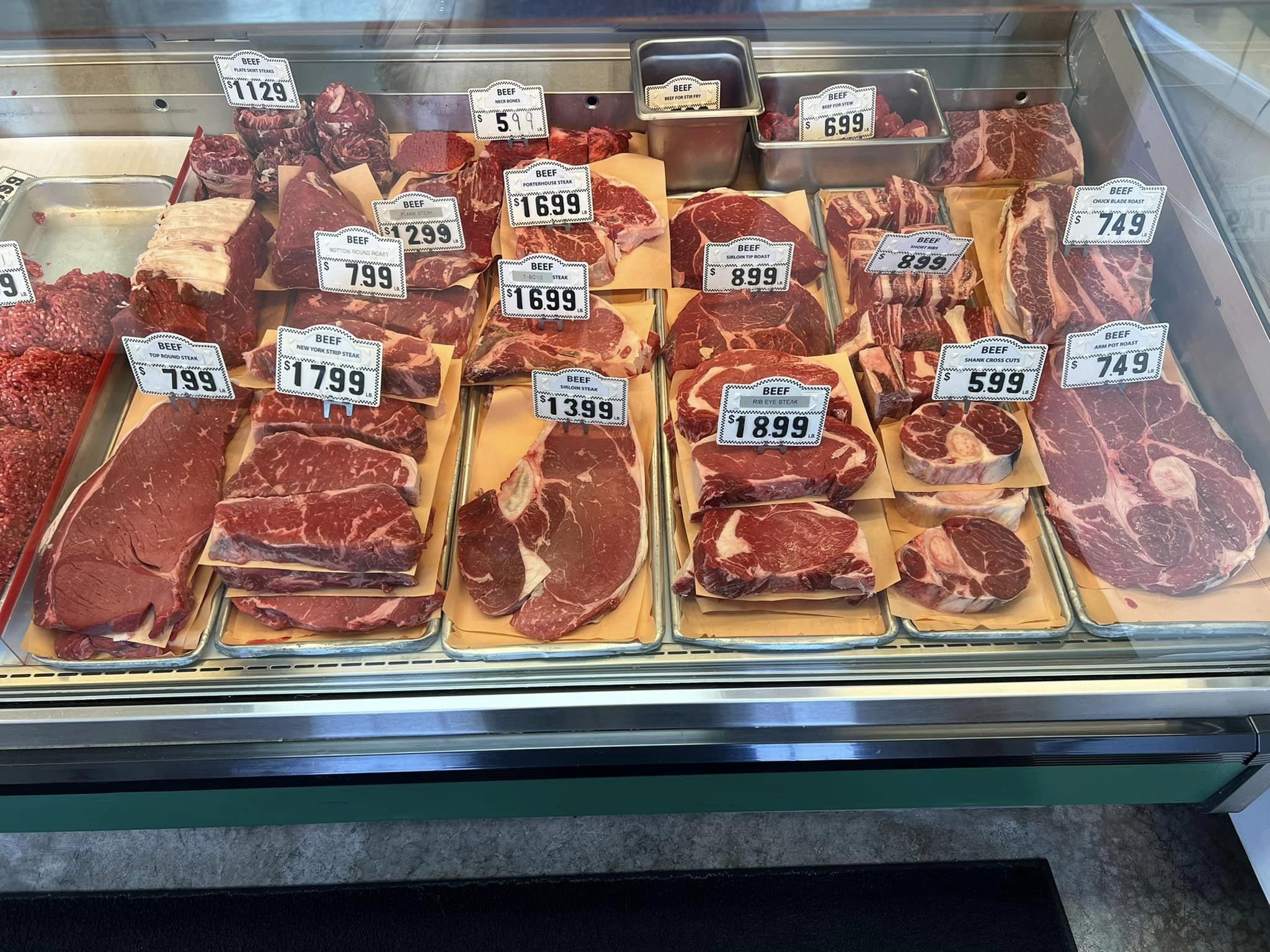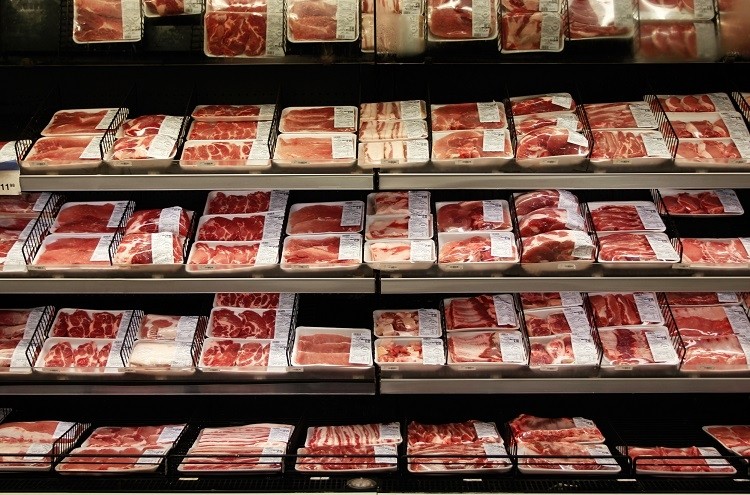Why Bagley Farms Meat Market Edwardsville IL Is the Best Choice for Top Quality Meats
Why Bagley Farms Meat Market Edwardsville IL Is the Best Choice for Top Quality Meats
Blog Article
Reveal the Art of the Butcher's Cut in a Modern Meat Market
In the ever-evolving landscape of contemporary meat markets, the butcher's cut has transcended its standard roots, merging old-time workmanship with contemporary practices. Today's butchers are not just processors of meat; they are knowledgeable artisans who stress sustainability and honest sourcing. Their experience in selecting and preparing cuts tailored to specific culinary demands offers an exceptional dining experience. Yet, what truly sets the modern butcher apart is their capability to create a deeper link in between consumers and the beginnings of their meat. Exactly how do these masters equilibrium practice with development, and what effects does this have for the future of meat usage?
Advancement of Butchery Strategies
The development of butchery techniques shows a rich tapestry of advancement and adaptation driven by innovations in modern technology, adjustments in consumer demand, and a deeper understanding of meat scientific research. Historically, butchery was a craft passed down with generations, with methods developed over centuries to make the most of yield and taste. However, the commercial transformation ushered in mechanization, changing standard practices and making it possible for large handling.
The mid-20th century saw butchery methods better fine-tuned by clinical insights into muscle biology and meat aging, boosting both tenderness and preference. Innovations like vacuum product packaging and refrigeration extended item shelf-life, allowing butchers to diversify offerings and improve quality assurance. This period also marked the rise of specialized equipment, such as band saws and meat slicers, which increased precision and performance in meat processing.

The 21st century has introduced electronic innovation right into the butchery realm. Electronic systems currently aid in tracking pet provenance and optimizing cuts to fulfill particular consumer choices. Additionally, a renewal in artisanal butchery has actually arised, mixing conventional skills with contemporary expertise to cater to customers seeking honest and sustainable meat alternatives. This development highlights a vibrant interaction in between practice and advancement, conference modern demands while preserving the craft's heritage.
Comprehending Meat Cuts
Understanding the complexities of meat cuts is necessary for both butchers and customers looking for top quality and worth. Each cut originates from a various component of the pet, presenting distinct flavors, structures, and food preparation methods - bagley farms meat market edwardsville il. Proficiency of these differences not just improves cooking experiences but likewise takes full advantage of the energy of each carcass. For butchers, exact cuts show skill and respect for the craft, ensuring minimal waste and optimal yield.

Understanding muscular tissue composition is essential; muscles used more regularly by the pet often tend to be tougher and are best matched for slow-moving cooking approaches, while he said less-used muscles, like those discovered in the loin, are more tender and ideal for barbecuing or roasting. Experience with these distinctions empowers customers to make enlightened selections, enhancing their cooking endeavors.
Picking High Quality Meat
Picking the right meat entails even more than simply picking a visually attractive item from the screen. bagley farms meat market edwardsville il. The art of selecting high quality meat calls for a discerning eye and understanding of specific qualities that represent freshness and quality. Pay interest to the shade; beef ought to have a brilliant, cherry-red color, while lamb needs to display a soft pink tone, and pork a pale pink. This suggests the meat is fresh and hasn't been subjected to oxygen for too lengthy.
Second of all, think about the marbling, which describes the white streaks of fat within the muscular tissue. Correct marbling is a key sign of tenderness and taste, as it thaws during cooking, enhancing the meat's juiciness. Remember, higher marbling typically correlates with premium quality cuts, such as USDA Prime.
Texture is an additional crucial element; meat must feel solid to the touch, not slimy or excessively soft. Additionally, bear in mind the fragrance. Fresh meat must have a clean, neutral scent, totally free from any kind of sour or off-putting smells.
Matching Cuts With Food Preparation Approaches

On the other hand, tougher cuts like brisket and chuck roast are link abundant in collagen, which damages down right into jelly when cooked slowly. These cuts are ideal for braising or slow roasting, permitting the meat to tenderize in time and create deep, complex tastes. Likewise, cuts such as short ribs and pork shoulder prosper with slow-cooking approaches, where expanded cooking times change their durable appearances right into succulent meals.
Lamb shanks and oxtail, which need extended food preparation to soften, are ideal candidates for cooking or sluggish simmering. These techniques coax out abundant, passionate flavors while maintaining moisture. By recognizing the special qualities of each cut, chefs and home cooks alike can elevate their culinary creations, making sure each dish is both satisfying and memorable.
The Butcher's Function Today
Browsing the advancing landscape of the modern meat market, the butcher's duty today expands past mere prep work of cuts. Contemporary butchers are culinary artisans, educators, and supporters for sustainable methods. They bridge the space between the ranch and the fork by guaranteeing honest sourcing, comprehending pet husbandry, and focusing on transparency in the supply chain. This shift mirrors the expanding customer need for high quality over amount, where provenance and animal welfare are paramount.
In addition to crafting specific cuts, butchers now engage straight with consumers, providing cooking advice and customizing options to suit specific demands and choices. Their know-how in meat aging, marbling, and taste accounts equips consumers to make enlightened choices, boosting their culinary experiences. This personalized solution exhibits the butcher's progressing function as a trusted expert in the cooking area.
In addition, butchers are crucial in lessening waste, utilizing entire animals to create diverse items such as sausages and stocks. This thorough technique not just respects the pet but additionally straightens with modern sustainability objectives. By doing this, the modern butcher symbolizes both custom and advancement, adjusting to an ever-changing market while protecting the artistry and stability of their craft.
Verdict
Mastery in recognizing diverse meat cuts have a peek at this website and quality signs empowers butchers to provide educated recommendations, straightening specific cuts with ideal food preparation approaches. By honoring historic techniques while embracing modern demands, the butcher's role remains vital in today's innovative meat market.
Report this page